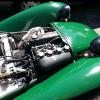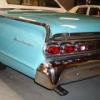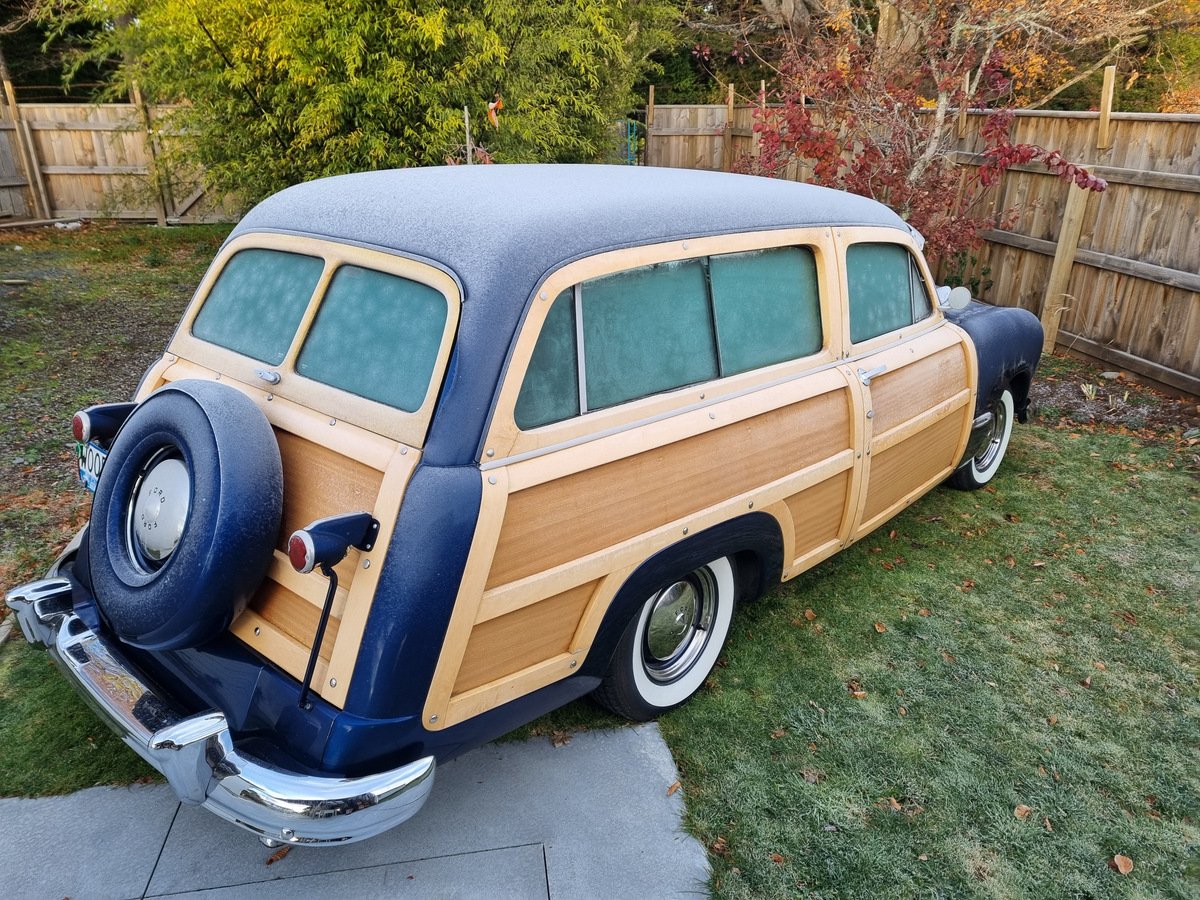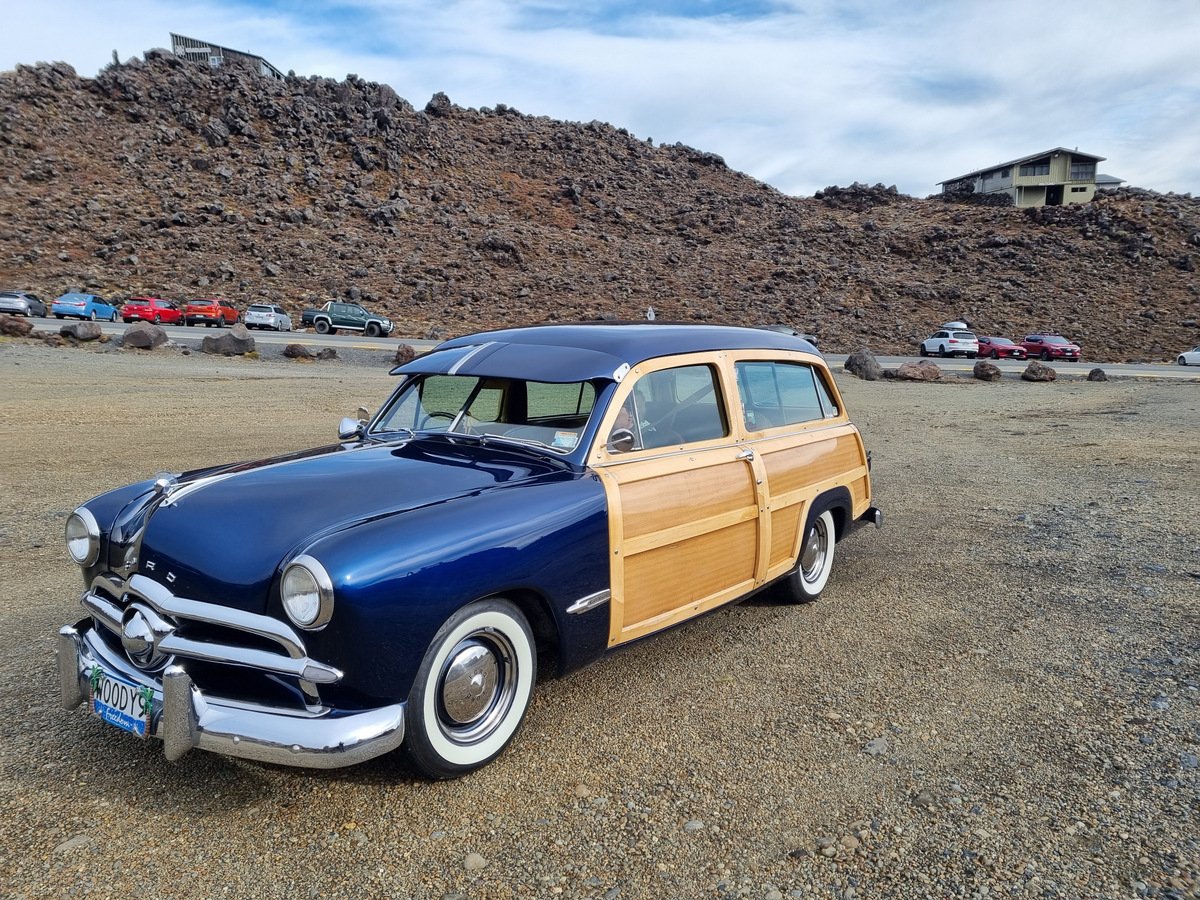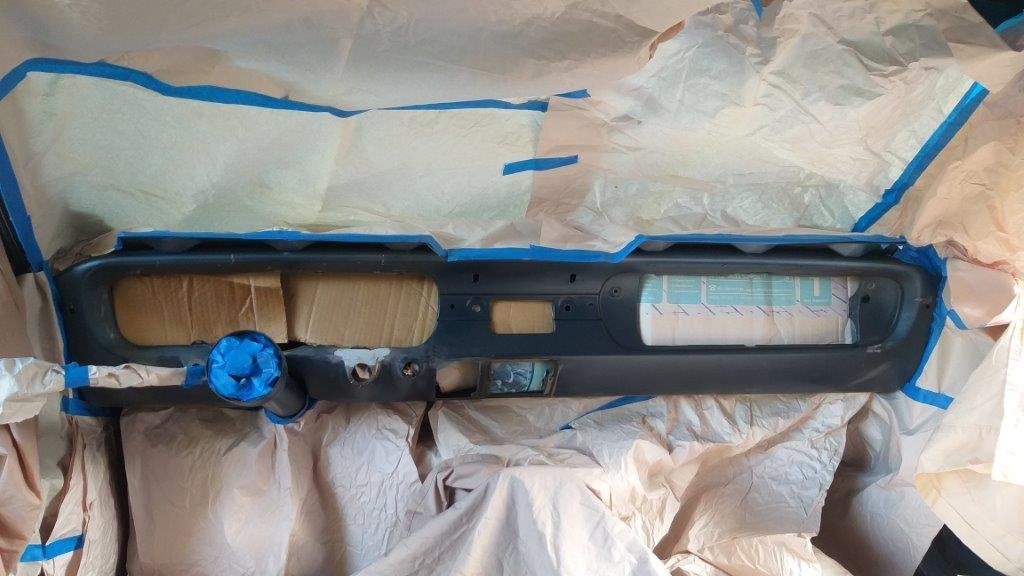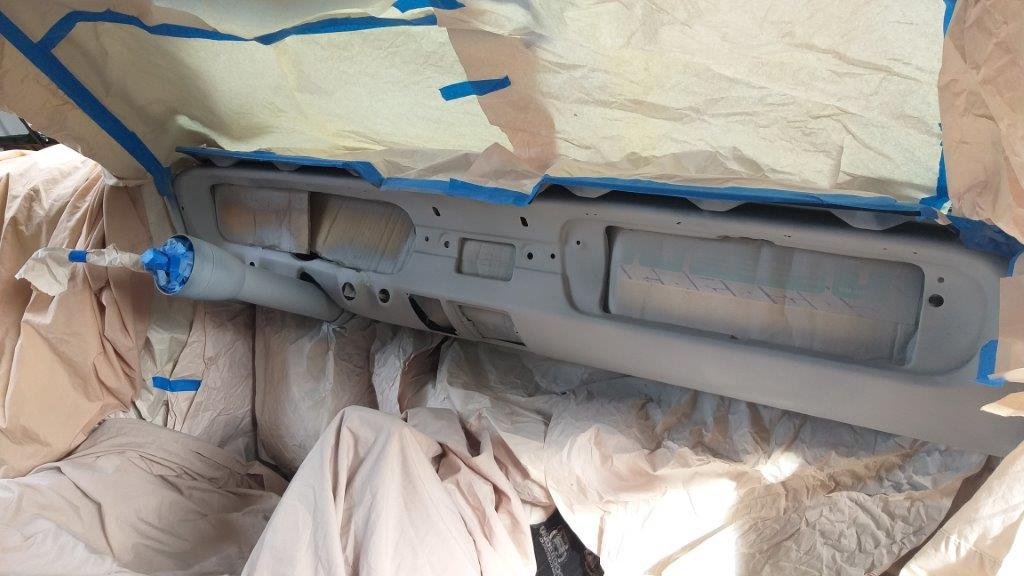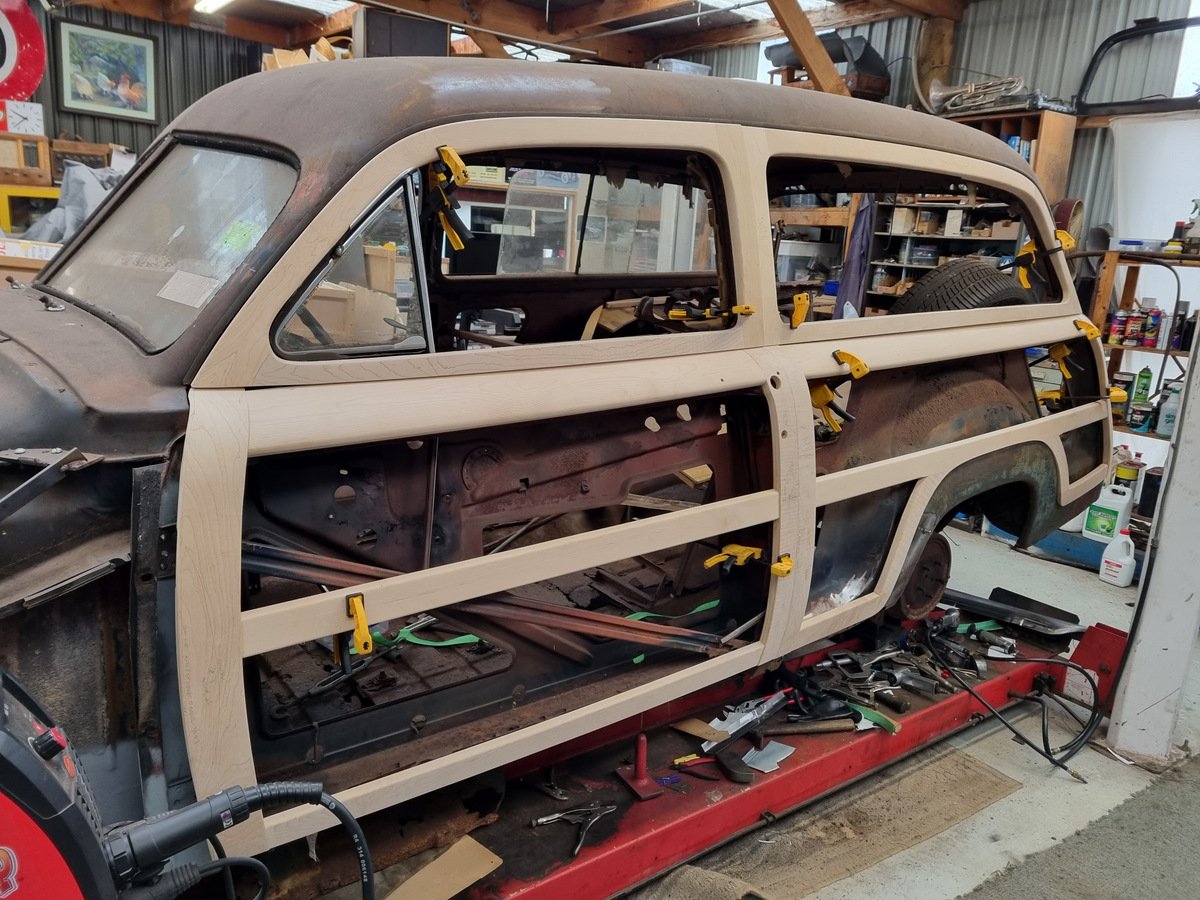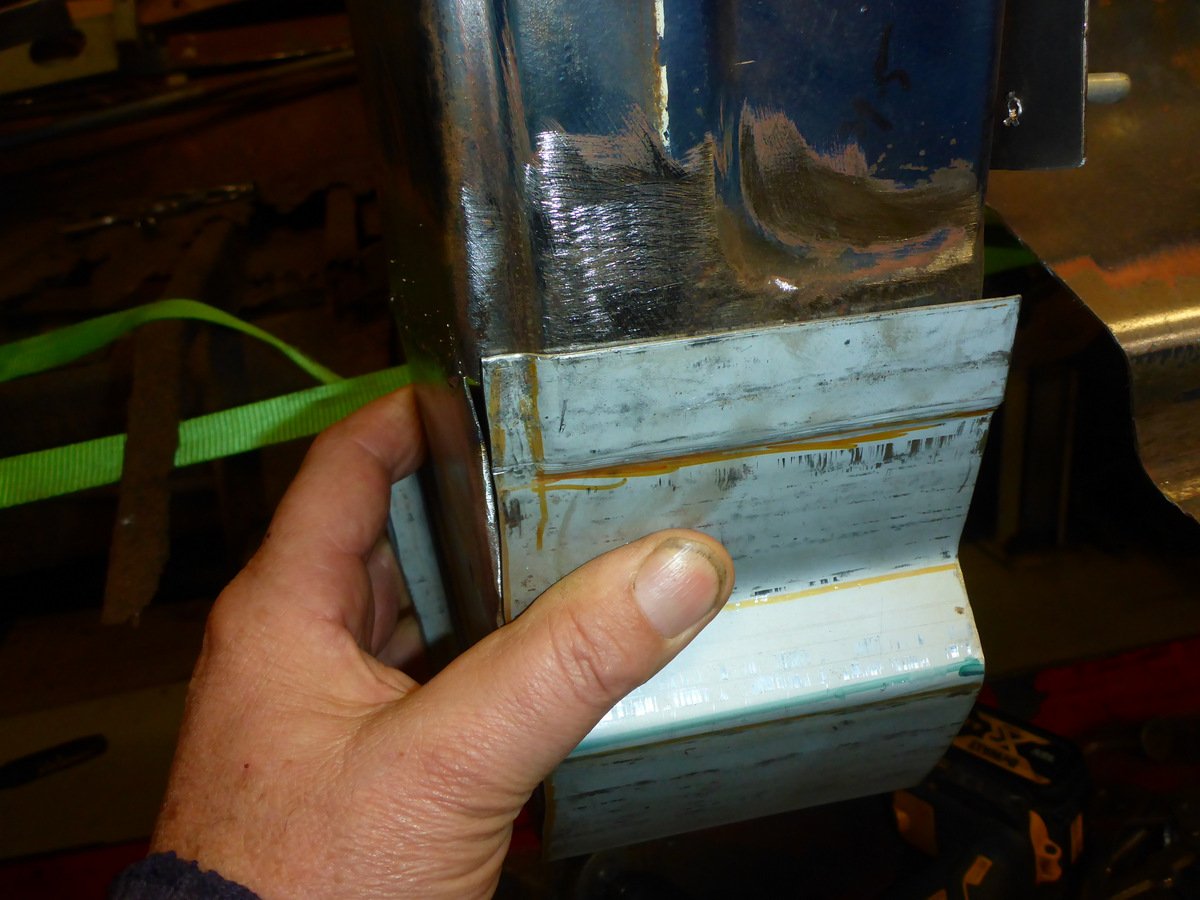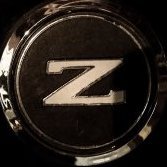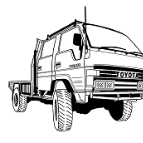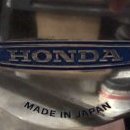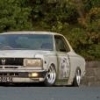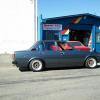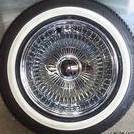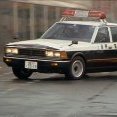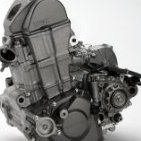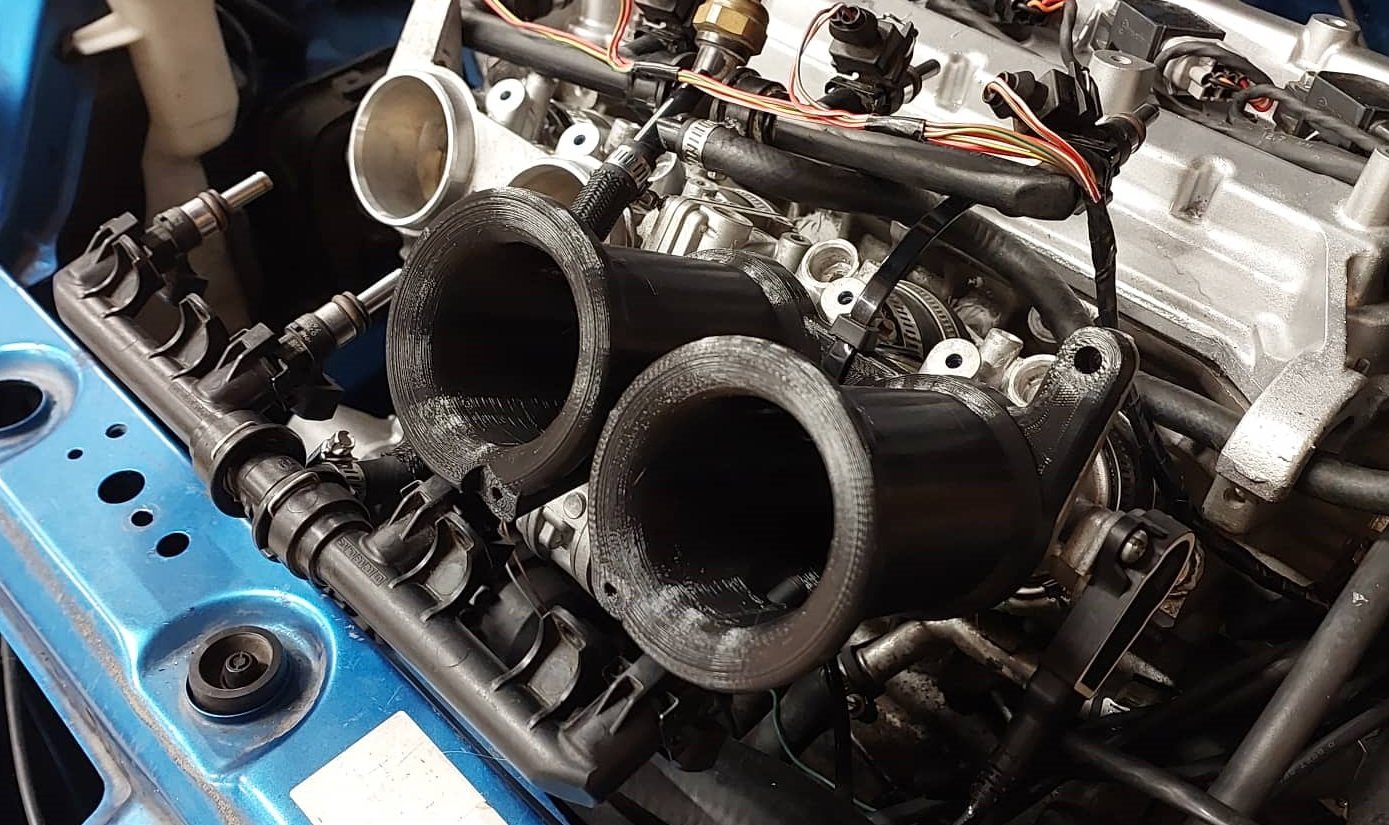Leaderboard
Popular Content
Showing content with the highest reputation on 06/16/22 in all areas
-
I got this back when i was an apprentice and did many of the period correct mods. RB30DET, cut a hole in the front bumper for larger intercooler, loud exhaust, terrible surge tank in boot, poorly fitted gauges (not in the A pillar to my credit) etc etc. It went terribly fast, and ran kind of poorly due to some lol issues that i never worked out at the time. I went overseas not long after and i kept it in an old barn on dads farm with dreams of someday spending a heap of cash on it and doing skids etc This pic was early 2019 when we dragged it out of the shed. Lack of genuine barn dust due to being well covered for 10 years. Nothing happened until maybe a month ago when i got the motor out and apart. Assume the position like the rest of my shed - bonnet up.. Im not sure about the condition of the crank, it has some marks and has already been ground undersize, so i stripped a spare rb30 and will get it measured up and the machining done in July hopefully. So far, i have nitto rods, CP pistons 8.5:1, link G4X fury, 1000cc injectors, GTX 3582r, sinco manifold Its 4wd so i might buy one of those flash PRP block brace/adapter plates. Apparently they are necessary, as if you have 600+hp and a front LSD you will crack the block. But they are expensive, and so is a front LSD. so i might pass on that. Also bought a bosch DBW throttle, and got a 350z pedal assembly, they bolt straight in so that was an easy win. I have some time off in July so hopefully ill make some progress23 points
-
So while I plan out what my induction and exhaust setup with consist of I thought it best to get the alternator sorted. The goldwing engine originally had its alternator mounted off the back of the engine on a seperate casing now removed and driven via one of the many gears that resided within this casing between the engine and the clutch area. That area is now taken up by the bellhousing I have built and the alternator has to go on the front of the engine (which now the back ? of the engine as it sits in the imp..) and be driven off a crankshaft pulley that does not exist. This is what it looks like .. That little round cover hides the main cambelt drive pulleys and has a belt guide plate marked with various timing marks for setting up the ignition.. Under that pressed steel disc resides the first of the pulleys. Sandwiched between the pulleys is a 12 tooth trigger wheel - handy for my planned engine management on a six. I'll replace it with a 36-1 wheel though. So I need to machine up a few bits to allow the crank to run a mini v belt pulley and drive the Honda alternator which I had picked up at the local wreckers will sit about here... At another wreckers I found a pressed steel 5pk pulley from a power steering pump that was about the right diameter, had a flat mounting face and bolted in place with 4 little bolts. Ideal for my plan. I cut it down to suit a 3pk belt.. Then I popped a big lump of steel bar I luckily had left over from some other job into the lathe and machined up a hub with a locating extension on one side to match the inside of the cambelt pulley, of which which extends beyond the crankshaft nose by about 3mm. It drives , via a pin pushed into hub, off the hole in the cambelt pulley, which is there to locate the original timing plate.. The other side of this hub I bored out as far as I could whilst still allowing enough meat to bolt the pulley on. This hub then bolts onto the crankshaft, eccentrically located by the camshaft pulley and held fast by the crankbolt.. Then I machined an alloy 'plug' that fits snug into the bored out hub, machined on the end to centrally locate the steel pulley, rather then rely on the bolts.. And all lined up... So now I have a front drive pulley. Yay. Next up is making some sort of way to mount the alternator securely and not too ugly considering its going to be right there, centrally on view. Starting the mount by making lots of little tiny bits of alloy to tread about the workshop with this tool... I cut some strong alloy plate and mounted it to the top of the engine using several of the conveniently placed cast in mounting points scattered about the place on top of the engine. Thanks Honda I had to add a support on the front, easily bolted to the cambelt housing. Now I had a place that the alternator brackets could be bolted to. I just made it up as I went along and machined bits and pieces until I had what I was looking for. I wanted it to look a mix of between sort of factory and sort of 'race car'. I had lots of fun making more alloy swarf.. Of course I cut my plate too narrow... Eventually I ended up with all these bits to piece together... Together they made this.. But before I plonked the alternator in place I had to clean it. It looked horrid and had obviously resided in a Honda of some ilk with some serious oil leaks. It was also a bit corroded and things didn't want to pull apart too easily. I made a bespoke little bearing puller.. The filthy alloy castings came up nice with a petrol bath.. and even nicer with some wire brushing... While it was apart I cleaned up the slip rings... Painted the centre black. It will possibly be repainted in Imp blue at a later date, as a treat if the engine swap works out ok. Its just a look I quite like - call me 90s boy. Bolted it all back together, complete with a new main bearing that I happened to have in stock (must be one of the most common bearings ever -35/15/10) Then excitedly bolted it in place. My Honda goldwing now has a standard alternator mounted in a pretty normal fashion and it looks nice and neat... With that sorted I can move onto making the cooling pipes and induction setup. I have still not fully made my mind up on what route I'll be taking here but I'll probably to bite the bullet and click buy now on a set of itbs so at least I have something to play with and go from there. I need to find a set of suitable top feed injectors. Something around 200cc at a guess. The standard Honda goldwing 1800 items look like they'd be ok and pretty compact. I'll be making the mounting seats to suit, which I'll then weld in place on the stock intake runners. Fuel rail made to suit.18 points
-
long time no hear. Have had the work/life balance tipped way too far to the work side since jan 21 and haven't done much on the car. I did get the engine assembled, and @Bistro gave me a hand to install and test drive/run it in sometime maybe earlier this year. Engine went really well. Knocked a bit with the old gas in the tank, but is going sweet with some fresh stuff. Just running a stock cam and single carb at the moment. I have a cam and a MAXX ecu to run the injected carbs. Need to do the fuel supply inside the carb hats, and order some lash caps to suit the cam. Hopefully ill get onto it later in the year. Image hosting seems to have packed a shit so ill try something else. As it sits, a good storage area for my other projects...12 points
-
Thread sidetrack #1: The title for my our house/section might be available in roughly a month and a half. We've just had our finances preapproved again for another 3 months, as it expired. Been worried about getting our finances bounced due to changing interest rates etc. Hence needing to not spend any money etc etc. So that's a relief. Phew. So this is good and bad news for the Echo, it means hopefully the bulk of my housing worries are over sooner than later. But it also leaves me not much time to sort house stuff and do something with the car in the meantime. Once I've moved to the new place I'll not have a shed or anything for a while. So I really need to do something with it in the meantime to either get it mobile or make peace with it being dormant for a fair while yet. I'm thinking if I try fit stronger rods it'll end up having complications / cost / time blow out. If I buy an earlier motor with mechanical waterpump then I dont have 100% surety that it'll all swap easily and there are no complications with the alternator fitment and waterpump belt. So maybe for now I just get another Aqua one for a quick swap. Then when I've got some more cash monies I'll buy an earlier motor and put the good rods in it. Then hopefully get to a few events this coming summer as is, maybe with a little bit lower rev limit. Thread sidetrack #2: Also, a friend put his K24 swapped car up for sale. With aftermarket intake/exhaust, but standard cams. On the dyno this made 225hp at the wheels from 2.4 litres. So thats 93.75hp per litre at the wheels. The echo in its pre-blown up state on 20v throttle and standard exhaust made 141hp at the wheels from 1500cc... Which is 94hp per litre at the wheels. It's official, Prius motor is the new K swap Thread sidetrack #3: One of the reasons I've not worked on the Carina for ages, apart from being distracted with this. Is I really want to put a lighter engine in it. Turbo 1NZ seems like a really good option that will be really light weight, and tick all the boxes. I'd like to run an Altezza 6 speed box behind it, if so. So, I swapped one of my 3S bellhousings for a 1G version. So I've got both to see how they compare in case one's better. I've been meaning to take a bellhousing up to my Dads and sit it on the milling machine with the digital readout, so I can just work out the x and y coordinates of all of the holes. Then I thought... Oh wait I can do that with the printer. So I've got a rough-ish idea of where all of the holes are, and did the same for a 1NZ gearbox casing. The 1NZ bolt pattern is a little bit smaller on outside diameter than the 6 speed stuff. Not sure if that's going to work out good or bad for making an adapter. I'd also need to work out things like how deep the flywheel needs to sit inside it. Might need to shave off quite a bit of the bellhousing and weld something else on. Or something. Dunno yet, its a complex job and I'm feeling out of my depth. But will do some more research on it. The altezza's flywheel face sits quite far from the block, because they run a dual mass flywheel which is very thick. So it might be that the final overall length including new adapter needs to be considerably shorter. Which is also fine, as it pulls the gearbox slightly forward, and the stick is usually a little to rearwards on swaps. Anyone done something like this before? Any tips?10 points
-
Also got some evo brembo calipers and 320mm ish rotors. There are a few types of adapter brackets so i need to find a decent set that will pass cert, or buy some 350mm evoX rotors and adapters for the front and 350mm 370z rotors for the rear. My overnight parts from the UAE turned up yesterday with the r34 gtr master cylinder to suit the larger calipers. They look like the will have some stopping power. The current brakes used to run out just before i got to the top of mt messenger.10 points
-
Chassis update: I managed to make it back to NZ for a bit, a couple of months ago, to have a go at this chassis building thing my Dads been raving about! Turns out it is actually hard work! Hes just finished both rails! I just got a bunch of machined parts done. Spring mounts and braces that go between the rails. Just have two sheetmetal braces to figure out then all of it can be bolted/riveted together (with a few more holes and some tweaking I'm sure!)10 points
-
Took the working one away to Ohakune. Went well even after the frost so took a spin up to Whakapapa. Annoyingly left the petrol cap at National Park g.a.s and it wasn't there when I went back 90 minutes later so who knows what happened to it. Managed to find a substitute at Horopito Motors after sneaking entry on a Sunday when they were sort-of closed.9 points
-
Work on the metal dash panel continues. Earlier in the week I massaged the metal around the ignition switch back into shape. It was a real bugger as there is a welded in dash support right in the way, so no chance of getting a dolly in behind. Did the best I could and then applied a light smear of bog to smooth out the remaining ripples. With everything else taped up I've chucked a bit of high build primer on it. There is one small low spot that I've re-bogged, so thought I would post an update while I'm waiting for that to go off. Thanks for looking.6 points
-
Yes there is a definite lack of them around now. Its all thanks to the sideways hat brigade and their hectic driving style. Gearbox might be OK. Its a late 33 box i converted to push clutch. One of the main reasons for converting to e-throttle is to be able to limit the torque in 3rd gear, and 2nd if required. I have a complete transfer case and bearing set to give it a birthday and set up the clutches properly, plus a couple of big boxes to raid for parts should i need it. I have been converting 2wd navara box internals to fit RB for a long time now for a bunch of local drifters and have plenty of parts to keep my box going. However, there are a bunch of crazy norweigans who do a conversion kit for the bmw DCT trans. I think it will be about 10k which is a bit much, but dreams are free. Look up HPR tuning, there's some videos of a few 2jz and rb conversions. it looks awesome6 points
-
4 points
-
He's now a Certified Forklift Enthusiast.4 points
-
3/4 ain't bad. Mains and rods torqued to spec and it spins freely which is good More spaghetti Turned it into this. Vtec wire re run and run the reverse light wires That's all I can do on the loom until I get the motor/box into the car. Those rings are holding up the process a fair bit4 points
-
4 points
-
hi everybody. just to let you know where I'm at... I've looked at the motors I have here.. and I have a plan so cunning...you could put a tail on it and call it a weasel . just waiting on part4 points
-
Been a while since I posted anything, progress has been not too bad. The engine has been hanging out in there for a bit now, Im pretty comfortable with it. I decided to start working on the mounting and some of the other ancillary bits, as well as sorting out the gas locker and battery area. Got a sweet new toy too! So I threw the engine mounts and trans on and really got the engine into the final resting posi, or thereabouts. Started sussing out what to do re engine mounts, which necessitated starting to sus out what to do with alternator.. I have a 140A alternator form an old benz I scrapped so kindof dummied that into place, took original pully off old motor and bored centre out on my lathe for dummying purposes (still unsure if crank to alt pulley ratio is bang on - minor detail at this point). Anyway a bit of faffing about and we settled on a way of mounting and tensioning that ensured the belt doesnt foul the water pump housing (its pretty close). Made a cardboard template for the bracket, then drew it up in CAD, then printed 1:1 and cut out and checked fit. Was good. Did the same for header flanges. Also good. Next mish was then to CAD up the engine mounts, or rather engine cradle... So I spun up dome hollow bosses on the lathe for mounting to the original mounts, then roughly figured the width across these. Did a butload of measuring and crawling around underneath, fucked off a whole bunch of shitty wiring under there while I was at it. Then drew up the engine cradle, which mounts between the original engine mounts and gearbox mounts. Ill make a gbox xmember later. Looks like tail shaft will be about 600 long. I CAD this up with the intention of mounting the engine without the alternator to get engin placement right, and for ease of fab, then Ill clearance the mount later to accomodate the alternator. I need to release all these files for cutting now, but just been sidetracked with other bits.. So I started sorting out the gas locker, random I know but I kindof want to get the fuel tank situation sussed (possibly going to find another slightly bigger one, different shape), anyway that kindof relates to the gas/battery locker as there is some encroachment there.. So I removed a shitload of shit out of there, cut and trimmed everything that needed to go so I have a nice simple rectangular opening I can start to work with that also maximises use of the space. There will be a fair bit going on in here. Starter and house battery, battery splitter rig and solar controller, inverter and gas califont for sink and shower (see below, I got me a Joolca!) For the battery splitter/solar controller I have done a bit of digging around, there appears many different ways you can do this, but I was really hoping there was a product that just did it all and sorted it for you...turns out I think Ive found it - https://www.kickassproducts.com.au/buy/kickass-25a-dc-charger-with-anderson/KADCDC25A-AND be interested to hear peoples thoughts on this, and also opinions on simple ways of doing this. For me this ticks a lot of boxes. Controls Solar, does battery isolation between house and starter battery, accepts alternator input. Only problem I see is I have got me a pretty big panel to throw up top, around 375w from memory. I recall it outputing around 40V peak in summer and this thing is only rated to 23V... anyway, good to hear peoples thoughts on this. Plan is to mount Joolca in the back, gas bottle in front and a floor between gas and battery cavity. So I trimmed out the gas locker nicely, framed it up and instated a new rear wall for the locker from ply, reused some old bits of framing I chopped out. I gave the Joolca a good thrashing tonight. It pissed me off a bit, but I think it was because I was reciring water and it doesnt like the inlet temp of the water too high otherwise it cuts off the flame. I brought the Nomad kit for $650 thinking the shower head and tap looked the goods. They are, but I have since thought maybe I just hard plumb everything and only use the flash Joolca pump...will see. So the plan is to fully line the gas/califont locker with ally sheet and then duct from the door and have an exhaust fan sucking the hot air away through a hole behind the cab., go a nice louvred panel for this today and can reuse a few other bits of steel flashing I pulled from elsewhere. I also got some extrusion angle today for framing up around the gas locker opening. Next mish is to get some 0.9mm ally sheet for the outside cladding and gas locker. I will prob just draw all this up and then order a bunch of laser cutting, as I dont have a guillotine. I am fortunate enough to have a brake press though, so will draw to spec and then fold everything. Id kinda like to get the gas locker somewhat completed before refocusing on the engine. I probably wont do that though and jump all over the show or start a new mission...I cant really fully sort the gas locker until I commit to batteries, inverter and the like. That shit is proper money which I dont have right now. so will need to wait a bit and plan as best I can for what will go in there. Ive also started contemplating a bit of body work. I have decided to mount the shitter in the cab under the middle seat as there is enough room for the cassette in front of the engine, and also, its pretty funny. Anyway, thats my lot for now..3 points
-
3 points
-
Shit man I'm happy to put in a fiddy for another junker engine to see things keep moving, I am sure there are many more here would do the same. Time for an onlyfans.3 points
-
3 points
-
Have killed a motor or two, I can relate to your present situation. In my case, the car was sent to the naughty corner until I could muster the $$$/fucks to start again. In your case, option B is take donations from willing people. Even if just to score another stock bottom end to see your car back on the road in only 1 weekend. (Assuming it's not raining) this thread is more entertaining than sky TV. I'd chip in $30 happily. It really feels like we all share in your success. And every blown engine is a learning experience/scars have the power to remind us that the past was real........2 points
-
2 points
-
I think 8.5 will be a good comp ratio. I only want to run petrol. The calipers are all Evo 6-9 brembo. I can get adapters to run the 370z rear disc and the internal handbrake will still work. Plus with the r34 master it will give me a correct front:rear bias without any tomfoolery with a bias valve and whatnot2 points
-
I stepped in some rocking horse shit , slipped and landed on a unicorn. yup that’s right, I found a stock GTX gearbox that has been rebuilt. it us now on its way to me along with a left driveshaft and another baby unicorn, a working AFM. price paid, much less than I was expecting to have to pay for one. i technically have the parts to put together a complete car from a rolling body. Don’t dare me please, I can’t deal with that kind of pressure.2 points
-
This was the house we were trying to buy, https://www.trademe.co.nz/a/property/residential/lifestyle-property/auckland/papakura/ardmore/listing/36017409422 points
-
2 points
-
2 points
-
1 point
-
1 point
-
1 point
-
1 point
-
1 point
-
1 point
-
1 point
-
New level of 'its to far gone', to anyone else 'parts car' but to you 'ah just a little bit of rust' - Your work is awesome man.1 point
-
Yeah 100%, its been a worthy effort for an essentially stock motor with minimal mods. One one hand I should have sorted the rods already, but, hindsight aye? (and too much effort if it seemed okay without them) Not quite sure what's gonna happen from here as I'm fairly financially steamed until probably end of year at least. I've got the 1300 motor there still, maybe chuck the good head / cams combo on it, and see how VVTI goes with the full range of travel1 point
-
While I am disappointed for you, I think that engine deserves a high 5 for its efforts, I'm surprised that didn't happen sooner tbh1 point
-
Big trumpets sticking out the bonnet will be a 1 way ticket to green sticker haha. I should have a new version with bonnet compatible extra length, ready to go by tomorrow night though. These ones are rotated on 45 degree angle in order to try get as much length in as I can. Then about 130 deg of bend or something like that. Hopefully these indicate that they are "too long" as my life is easier if I can fit straight ones. But if they make good power then cant complain! No outer injectors but will try get the runner length right first. Will also try borrow the @Stu Science(tm) tig welder soonish and have a go at splooging together a mild steel exhaust.1 point
-
A bit earlier this time around as that is the only time they could fit us in, apparently it will be a busy night for them. Come along to 1841 in Johnsonville for a catch up and some eats. They have a special on Thursday of all mains @$24 each. Y'all dont need a map, you know where it is!1 point
-
Gave up on the idea of the arp rod bolts, will need to be pressed in and honed to suit. I'll just Wang the stock ones back in. They were good enough for the last build so they'll be good enough for this Went to assemble and rod bearing looked off Turns out my motor has the wider bearing which is the same as the vtec motors. Vacuumed/cleaned all the swarf out of the head and put the oil feed plug in Modded s2000 clutch master is perfect distance for the pedal. But the reservoir hits everything The Facelift orthia must have a different firewall as the earlier ones share the same clutch master as the civics/integras and those need a spacer for the s2000 master to work. I'll extend the rod to suit as I don't want to wait or pay for for the genuine master1 point
-
1 point
-
I ran my dereg'd Hilux through VTNZ for a compliance check. I had the chassis recently painted prior to the check, it did have some minor cab damage that had been repaired but was noticeable. The inspector simply requested a structural repair cert for the vehicle to comply. So I'd recommend not to get to carried away with paint and put it through the check as is1 point
-
Toyota Echo Intake version 6 million As per previous waffling I think it will be beneficial from a reflected wave perspective to keep the intake runners more parallel most of the way up... Then also make them a bit longer. So I modelled this up. So this then had the flow on effect of making the fuel rail situation a little tidier as well, as it pokes in from the other side. So just use the regular tabs on the fuel rail for holding it in place. Also keeps more of the perimeter unobstructed, which might be important now tha the cross sectional area at the entrance is greatly reduced. Also now the fuel line and the injector plugs are flipping upside down too, so it will look a lot less messy. First iteration needs some dimensional changes to fit properly but so far so good. It's got about 10mm clearance the the bonnet which is perhaps a little marginal. (because of longer runners) But see how it goes. I still havent figured out how to print the nylon stuff properly yet, might need to wait until I've got some $$ to buy a dehydrator box. But I'll try get the design sorted in PLA for the moment anyway.1 point
-
1 point
-
Look at this lot I have to play with. Here's a head. Lovely little things. Nicely made. Very clean and simple. Brilliant hemi design. Not sure on the valve angles but I could picture it flowing nicely (based on the knowledge of my mildly edumacated mind about such technical enginy things, stuff gained from reading old cars and car conversion books etc) I measured the valves. The inlet is a fairly decent 33mm thereabouts. Exhaust 28mm Not bad. Not bad at all really. I dunno if they have anything mildly flash like a 3 angle seat. I suspect not. Goldwings are a pay grade above such frilvolous race engine nonsense. But I think I do happen to have a valve grinding setup and some seat cutters amongst the engine reconditioning stuff I was given a year or so ago. Anyway.. I won't get too excited because as far as maximum flow at stratospheric revs go it heads downhill from the valve sizes. Just look at the size of this inlet port... 25mm Extravagance ! Not really much room to open it out either, nor risk mucking about with the port innards. Too risky. Now the other end of the equation. Exhaust port is 28mm one way and 23 the other. I think its cast like that on purpose to aid the low engine speed air flow (these engines are all about torque... and I'll probably mention that several times as I go on, just as I take a sip of my finest scotch. Lets not mention those dirty words like bhp and redlines) The exhaust headers are comical. But I shouldn't really laugh because I know full well that the technical boffins at Honda know a heck of a lot more than me about cylinder head flow and tuning engines to suit bikes that are made to cruise all day long for a lifespan in the vicinity of 1,000,000 miles. But still. They are funny.. At first glance one might be fooled into thinking they are maybe 26- 28mm like the ports. But they step down to an internal diameter of 23mm. Outside measures ap at around 26mm. The valkyrie items are not bigger from what I can gather. They just have a poncy bit of shiny chrome tube over them so they look bigger..and shiny. So there we have it. Plans thus far. My intention is to start the induction side with some bmw k75 itbs, injectors mounted into custom flanges to suit. They are about 34mm thereabouts so hugely more than big enough. They are not perfect though and will involve a bit of tinkering because the K series of engines have port spacing at 75mm and the Goldwing ports are spaced at 90mm. But they are separate and things could be adapted I'm sure. These .. I'm probably going down this route mainly for the induction sound, the response and the looks. Topped with K&N filters (breathing in that super hot engine bay air....) with machined alloy covers. Hmmmmmmmm yummy. However if I don't do itbs for some reason then my next choice will be to fabricate some neat looking runners that are fed from a single centre mounted plenum, in a sort of slight race car like finish. A single throttle body and a nice machined top to the plenum chamber. This would be the easiest and quickest route, with the stock inlet runners lending themselves to being modified to suit. ECU I already have (Megasquirt 3 since you ask) can do fully sequential on six. This will give me the ability to tune for a really sweet idle, better off the mark acceleration at low revs and hopefully better economy. The exhaust. Here's a pic of the stock headers attached in place. They need a tiny bit of chopping and moving about to clear the back of the engine mount area, plus they sit too low, below the sump. I'm undecided about mucking about with the headers themselves for what would probably be small gains. I wouldn't want to go any larger than 28mm od on the tubes and from my googling so far it's not a common size for stainless or mildsteel bends. I would love to have a person who is super well qualified and really experienced (which is more important really) about such things as exhaust airspeed and the effects the primaries have. Someone who does this for a living. But otherwise I'll keeping trawling through all the various opinions that google offers from men in pubs and their dogs, stack all the offers and snippets of info up an a big pile and select the mean average. With a hint of gut instinct weighed heavily on by how much I can be arsed. So far it seems that great exhaust sounds can and are to be had from these engines by mucking about with everything past the primaries. I suspect the gas leaves these little pipes with sod all resistance and Honda was happy with the airspeeds they got because if not it would have been very easy for them to have increased the size of them with no real other issues. But they didn't. So I'm probably going to concentrate more on the length of them, keeping the pipes as equal as I can an look more deeply into what happens afterwards. I'm super keen to hear lots of sage exhaust advice from other men in pubs though - if only to give more my mean average pile more height.1 point
-
Time to mount up. First thing was to remove the air from the nearside chassis rail. It was a bit frilly right where I want to bolt a crossmember.. I bought some bobbin style rubber mounts, 60 in hardness, from the local engineering shop. They are British made mounts so somehow they will probably leak. I cut some plates that then bolted to the stock Subaru gearbox mount points. Then shuffled the engine/box into the position I wanted it to sit. I had measured the level at which Imp one sat on the ground, finding that the bottom of the rear side windows were pretty much level. I set Imp two up on the hoist at the same level and made sure it was level across the car. Marked things, measured things, checked clearances. Once happy with all that I got some cardboard and started making little shapes with folds out of it. Added a bobbin and the other end went through the original Imp gearbox chassis mount, hole enlarged a mm to take a 10mm stud. Kept trying them until things looked good and transferred the shape to steel. Bent the shape in the... bender. Tacked in place.. Removed to be reinforced and fully welded.. Finished and fitted... Now for the front of the engine. Or is that the back of the engine? The other end. I plonked a bit of steel in place. I didn't want to go much lower than the sump. I went for some low profile bobbins that were ideal. Cut some more plate to suit and drilled, tapped, bolted them in place on the engine end plate. Played with more cardboard and then steel, folded and tacked till I had things that held bobbins. welded them up.. Next job was to make a crossmember. Now there was going to be lots of moving this engine/box in and out of position. Not just now while building the crossmember but in the future of the build as I do exhausts/piping/induction etc. The huge steel bench we have in the workshop that I had been moving the engine in and out on was just that - huge, heavy and often in the way. Plus its set in height so when I wanted to move the engine position up and down it was via the car hoist which is not exactly finely controlled. I needed a bespoke engine table that was easily height adjustable. Enter stage left the 'Engine cart 2000'.. I whipped that lot above in one evening using an old height adjustable Bedford truck seat base, some spare steel offcuts from the steel rack and some budget castor wheels from Mitre 10. I added some plywood for the top and then I sat on it whilst twiddling the knob - which made things go up. And down. It was designed to match up with the main workbench in height so I could slide the engine and box straight on. Engine and box are quite light as they are and I can shift them about easily but that wont last when the flywheel/clutch/pistons/heads/gearbox internals are all back in their rightful homes. I painted it grey because I don't like blue steel and Mitre 10 had loads of plasticoat spray paint on clearance. I couldn't help but mask the old sticker on the seat base.. Hannah varnished the plywood so it looked pretty. But then I realised that sliding the engine off and on was going to ruin the ply, nor was plywood a very slidey surface. So a bit of old stainless kitchen bench got cut up for the top layer. Now in action.. Aint that just so cute. Way easier to move the lot about the workshop and into position under the car- which now handily sits a bit higher in the air which was nice for the next stage. Crossmember time. I wanted this to be more organic/factory looking then the simple box section one holding the Datsun up. It had to be strong and allow plenty of space for exhaust pipes heading backwards to a silencer assembly that will be slung under the rear valence. It also had remove easily from the car, ideally still attached to the engine if need be. I started by making some mount points that would bolt in and out easily onto the chassis rails. Captive nuts welded on some angle iron that sits on the inside of the rails. 4 bolts per side. These bolted in place with 3mm alloy spacers on each side to allow for differences between this car and Imp one, which I know has rails a few mm closer. Plasma cut a strip 50mm wide from 3mm mild steel plate. Welded some mounts on it to suit the bobbins hanging from the engine. Bent a curve in the plate till it sat where I wanted and had the shape I desired. Then started cutting cardboard again... and transferring it to steel... Tacked it altogether.. Added tubes to it for easy access to the engine mount nuts which made for a cleaner look. I could close off the angles on top and make it all pretty like. I welded what I could on the inside of the crossmember. I really didn't want exposed welds on the outside or any lumps. Then welded the outside. I had to be strategic because even though it was all 3mm steel it would still move a heap as the welds cooled- shrink on the welded edge and shorten or lengthen the whole length either way. My final welds had to pull it back out in length as they cooled and shrunk so it matched the rails. To much relief I got it pretty much bang on and it all still lined up sweet. The whole time I was building this bugger I was thinking 'ooh this is going to be hefty..' and stressing. Trying to find a happy medium between strength and weight but strength really was the most important thing. I didn't want my engine to fall on the road. As it was it turned out ok. Not a bad weight at all. I hung it on some scales.. Not bad at all. Just a smidge heavier than the alternator for example. Certainly brute enough. I was happy. I bolted the whole lot in place, lowered the wheely cart 2000 out of the way and there it sat, engine and box finally suspended on their own mounts. Beautiful I thought. So beautiful that I had to take the car off the hoist and snap some pics... Would ya look at that. Damn that looks cool. I was fucking stoked. This was a big occasion. I patted myself on the back and then took some more pics and measured some things.. Clearance under the car was great. The crossmember was only about 10mm lower than the exhaust on IMP one however this was also far further forward. It'll be gravy. The room between the inlet faces on the heads and what would be the underside of the parcel shelf was almost bang on what I had very originally measure it to be when I first mocked the untouched engine up under Imp one. About 170mm.. Neat. I'd better start ordering some induction goodies eh. So that's that. Engine is now a bolt in thing. When the time comes I'll be transferring this crossmember along with the suspension crossmember over to Impy one. But I'm a long way from that point. I put Imp two back on the hoist, gracefully rolled the engine cart 2000 back in place, 'UNBOLTED' the engine and box and rolled it away. Engine was slid back onto the bench and I am now going to look at making a custom alternator drive pulley and mounting the alternator (probably the old prelude/civic item I scored from the wreckers) I have also been looking into the exhaust. I'm doing some research and trying suss out what to do about headers. Either modifying what I have or making bespoke ones. But that's another story and will be my next instalment.1 point
-
In terms of actual activity there is little to report, however the pondering, and opining from cunts like @ThePog and my worker - of near-equal cunt status - has been somewhat rampant. The main topic of conversation has over the last few days largely revolved around whether it is actually going to fit. It is largely a problem I have never encountered - just saying. So the motor has been sitting in the same position since we dumped it in there. I had to have a bit of a workshop tidy up. As many of you would well be familiar with, doing shit like this means sorting your shit out along the way and doing things in stages, so come assembly time you largely have all the shit in order, just requiring cleaning or a fufu can touch-up job. So I did that last night, and then suggested to Kyle that we wheel the cab back on, just to see (and to stop us thinking about the actual problems below). The carb had to be lifted off the engine to wheel the cab back over. But my oh my, doesnt it look pretty in the hole. Confirmed, It is Gynormous.. Also confirmed, the fucking thing is going to live in that hole regardless. Chassis chop, mid mound, fucking whadeva G. Every other possible engine option is shit in comparison, so that bit is solved. Now I need to solve the actual shit of ensuring whatever we do doesn't result in either a basket case chassis-hack job that will never be legal, or someones lunch being sucked out through their asshole by virtue of the carburetors somewhat prominent position inside the cabin. See pics - it is not optimal, the engine must go down in order for the carb to actually clear the engine cover and/or seat. The chassis rails actually widen where they pass under the camper body, and if they were that width in the engine bay we would already have that cunt mounted and half wired up - but alas that is not the case... So the present possible solutions are as follows; Option 1 - slice a 30mm ish slither out of the inside top of the chassis rails (removing some of top leg of C-channel), effectively continuing the inside line of the chassis rail (under camper body) further forward through to where the front of the engine is, then stepping in (see chalk marks). Then strengthening the Chassis with another plate on outside with folded edge to reinstate the 'beam strength' back into the chassis, or adding other folded piece over top extending further rearward and forward (kindof boxing the outside) This would allow the engine to drop down and maintain the current position. Tight set of log-style headers, removable from below should be achievable. FYI, Im an Industrial Designer by trade so drawing up, profile cutting, folding some shit, fabbing and modding the rails doesnt seem a terrible idea to me - but there are obviously rules and my cert man has already advised his 'preference' is for not modding the rails. I feel a CAD model is needed just to communicate my thinking further here.. Option 2 - start hacking out the camper body - this is effectively the area at floor level under the sink - possibly the most useless space in the entire camper. Making a removable section and shifting the motor back far enough (prob 250mm max further rearward of current position or roughly half of the engine under the camper body. Driveshaft gets rather short, as believe it or not the wheelbase of this thing is a tad under 3 metres. This area will need a massage anyway for the trans, so there is some logic in cutting here now and then reinstating removable infrastructure later for trans access etc - regardless of where the engine ends up - ie it would allow us to fully entertain that possibility. Doing this means the engine slots between the rails somewhat easier, but obviously engine access becomes more limited and opening the engine access hatch means the engine wont really be that accessible (prob dipstick, dizzy etc access but little else). And it will look weird - I like the idea of opening that hatch and there she is in all her glory.. Added bonus is there will effectively be a 'Frunk' under the seats where the engine once sat... Option 3 - the oldschool hivemind give me your opinions on my discussion thread - maybe there is something I am missing here. Its hard to communicate how tight it is, hopefully the pics below tell the full story. Be great to hear others thoughts on what is possible here - I am actually also thinking of talking to one of the local Truck Chassis mod dudes too - given this thing is actually just a truck.. Chur.1 point
-
Next step in the puzzle was to sort out a clutch release system. I had a couple of options that could work. I could use the stock Subaru fork but it was not ideal for two reasons ; 1: It would need a the release bearing carrier adapting to take a larger diameter bearing that would suit the Honda pressure plate fingers. 2: Its pivot location, being a centre mounted fulcrum point, would require a slave cylinder that pushed it towards the front of the car. This is because originally the Leone the transmission came from uses a clutch cable. I'd being using a hydraulic slave and it would have to be mounted up high, over the engine. Probably clash with the underside of the parcel shelf and would definitely look ugly there. Option two was to use the Ford Mundano concentric slave cylinder I have had stashed away for ages, acquired with the Duratec engine I was going to fit into the Viva wagon many moons ago. This certainly seemed the most sensible option because it fitted into the location almost perfectly... The pipes even pop out through the Subaru release fork hole like it was made for it... But it was still going to require a little work. First off is that it has a flat bearing face, made to suit curved diaphragm spring ends. It was also too small in diameter to suit the fingers. So a lump of steel was plucked from the store... There was just enough room between the bearing face and the 'slidey hub' bit that the bearing hydraulics slide in and out on for me to machine a locating stub onto the bit of steel... With that being a perfect fitting locating point the other side was machined with a radialised face to suit the flat fingers. The end result looks like this.. This will be stuck in place onto the release bearing face with something like loctite 601. It cant go anywhere anyway. Next issue was fixing this whole unit in place and making sure its dead square to the input shaft centre line. Luckily the units bore was larger that the stub/shaft?* that the Subaru release bearing carrier slides on by about 2mm. It also so happened that when pushed on as far as it would go it allowed for just the right amount of movement of the release bearing, plus a bit to spare. So I machined a thin sleeve with a lip at one end to suit.. This I made a nice snug fit onto the stub/shaft thing and the Mundano assembly slides in place snug, thus making sure it all remains square. I assembled the lot together and checked it all with the transmission bolted in place. Looks good.. The initial throw of the release bearing will be adjusted at the pedal, which will now require me to either use the Mundano master cylinder (plastic..yuck) or machine/ sleeve my Imp one (actually the same as a landrover/most trailer brakes out there..) to suit. I'll look at that when I get to it. Next step is to bolt the assembly in place. The Leone box has splines cast in around the stub base... ..but luckily enough room between them to glue some blocks in place so I machined some alloy down to suit.. Because I knew the assembly was perfectly straight and in line I just needed to give enough clearance on the blocks to allow for some epoxy. I drilled and tapped the blocks to suit, mixed up some of my favourite JB weld and filled the chosen cavities then slide it back in place. Then let it set overnight.. The next day I tried the original Mundano rubber boot for the pipe exit. It almost fitted. I sliced 5mm out of its width and it was sorted. Not perfect looking but it works and cant be seen once the engine is in place anyway... Phew. Done. At this point I really did have a feeling like I had made it past the trickiest bits of the engine work required. But for some possible baffles around the oil pump pick up and maybe an anti surge plate (not that the Goldwing engine has any as stock) I think all the required mods to the engine are done. I felt like having a cold beer. So I did. Then pondered the next jobs to do. Which was to look at where I would run my cooling pipes and finalise the position of the oil filler tube.. In order to properly work through some routing ideas I had to plonk the heads back on. With them in place I might as well have some fun, bolt the transmission on and stand back with my beer and gaze at it all. I took some pics. I'm pretty bloody happy with it how it looks and I really did get a mojo boost looking at it sitting there as a complete unit waiting to go in... Its so neat and compact for a flat six.. Man I'm looking forward to having this setup in the back of my Imp! What's nice to think about is that while there's still a big load of work to do these next jobs will be super fun. I'm especially looking forward to making the ITB arrangement to suit and doing my best to create a really clean looking engine bay.1 point
-
Starter motor time. I had bought a Subaru leone 1.8 starter from the fella I'd got the gearboxes and 1.8 ring gear from. Made sense to use all the same bits. Only thing I'd have to do was move the mounting face for the starter forwards towards the engine to suit the new ring gear position on my home made flywheel... Easy as I thought and I had it all planned out. I shall start at dawn! However that's not what happened once I got a friendly query from a fella about the starter motor turning the engine the wrong way. Oh yeah. Bugger. Of course it will do that. Yay. So after a few ideas and suggestions from various folk I had a few options. My first option was to mount the Subaru starter on the front of the bellhousing adaptor, facing backwards. Essentially turn it 180 degrees and it would spin the Honda engine in the required anti-clockwise direction I needed. But would it fit? Yes it does... It wouldn't be too tricky to mount and on extension the pinion almost lined up perfectly with the ring gear. It sat down in place quite low too. So this solution was a strong contender. But it had a couple of weaknesses that meant it went to the back burner. One: the ring gear would need turning around so the leads shaped into the teeth faced the pinion. Turning it round and having the pinion strike it from the opposite side then meant that the step I had machined into the flywheel would have been on the wrong side and the gear could potentially work off over time. I was reluctant about the idea I could add a few welds, as some folk will do, because it adds stress risers, could affect the balance. I really didn't want to muck about with the ring gear. Two: having a fairly large ugly starter motor plonked right there on the top of the motor was something I never had in my minds pictures of how I wanted the engine bay to look. It would be right where I might want some linkages for the itbs, possibly a centrally mounted plenum between the itbs and there was also going to be some water pipes around that area too. So back to the other options- the main one being to look for a suitable Honda starter that's mounted from the gearbox side or a starter from any standard clockwise rotating engine that mounts from the front. The pinion had to have the same pitch and ideally the same tooth count. I did some research and it seemed that all the Japanese cars of this era all shared the same pinion pitch and were all around the 9 or 10 teeth. This was handy indeed. Off to the wreckers then... I went through the various shelves of starters, starting with Honda and found a possible candidate within a couple of minutes. Feeling pretty satisfied with my find I still double checked the other shelves just in case there was something even better but eventually I was spotted skipping out of the door happy with my Honda Civic/accord starter. Back home I looked at my booty. Subaru one is on the left... They were so close but not close enough. The Honda item has a smaller diameter 'locating spigot' that centralises it in the hole on the mounting face of the bell housing. This was a better turnout than it being bigger than the hole though! I would machine the hole in the plate to suit the new starter, which I was going to have to do for the original plan using the Subaru one anyway. The holes for the starter mounting bolts, that go through the bell housing into the engine, were 5mm closer at about 115mm and they were also offset to one side, not in line with the starters centreline. This was handy though because I could then have separate bolts holding the bell housing and room to turn the Honda starter about its axis, having the solenoid positioned in the least obstructive way. A plan was forming in my head. I took some measurements, did some scribbles and it all looked like it should work ok... I had already bought a hefty bit of 12mm plate for the Subaru starter repositioning and luckily it was still going to work with the new starter. I swapped the 4 jaw chuck onto the lathe and set it up. Drilled a big hole... Bored the hole out to suit the Honda starter spigot... Marked and drilled holes to suit... Recessed and spot faced one of the holes for the bellhousing to the engine bolts that just happened to slightly clash with a bit of the starter casting. So I now had a plate that the starter fitted neatly into, with not a hint of slop. The bolt holes lined up perfectly with the bellhousing bolt holes so lining the starter up the correct distance out from the ring gear. Now I need to move the face of this plate closer to the engine... So I cut a big lump of alloy from the bellhousing with a grinder and a hacksaw... This allowed me to move the plate closer and let the pinion fully engage with the ring gear... I tested the fit of the starter... The height was good but I wanted it to be perfectly parallel to the face of the flywheel so I really had to mill it. Luckily I was just able to squeeze the gearbox into a position on the mill that allowed me to face it perfectly... I must have some pretty honed hacksaw skills because I only needed to skim off about .75mm to get it flat. Sweet. Now I bolted the plate in place, then the starter and tested it... Oh I forgot to mention that once I had decided I was going to use a starter mounted in the original position I popped a hole through the adaptor plate in line with the starter pinion. This was to allow me to check the pinion mesh... I was super happy with the mesh so I marked the excess on the plate to be trimmed off and gave it a hair cut in the bandsaw... I also milled out the back of the plate where it just clashed with the rivets and pressings on the outer edge clutch pressure plate. Bolted it back in and welded it up, taking lots of care to avoid any chance of movement or warping. It went well.. Added some little filler plates to tie it in neatly and gave it a tickle with a flap disc... Bolted the starter back in, stood back and admired it all, really happy that one of the trickier jobs had been completed and that the starter was sitting in there very neatly and tucked away nicely, no higher than the top of the bellhousing... Next step was to make a cover for the 'front' of the engine, adding a connecting link between the oil filter outlet and the main oil way into the engine, a filling point for the sump, a dipstick and allocations for engine mounts to suit a cross member. Still lots of work to do but I'm getting closer...1 point
-
Talked with Michael Anderson from the Bugatti Club Australia a few months back. Good guy to talk to. Heres a copy of the article for those interested. Originally published in The Bugatti Bulletin Vol 73, August 2021. Reproduced with the kind permission of Bugatti Club Australia Inc.1 point
-
Phew- been busy. Lots done = update time. But to save my sanity I might do it in two lots. So as per @GregT bit of information above I looked into motorbike oil pump chains and yeah- bugger all have tensioners and they actually run quite loose. I then decided to scrap the idea of spring loaded tensioners because even with the ones I had they were still a bit awkward to fit and didn't quite work in the angle I would have wanted. So enter stage left my new adjustable tensioner device... which fits like this... The bolts that clamp it down are actually accessible from below with the sump plate removed so once the chains wear to a point that I'm not happy with I can tension them independently. The will be nyloc nuts replacing those normal nuts on the tensioner bolts when the final assembly takes place. So with that finally finished I moved on down. The sump cover. It has to be fairly beefy because it could see some hits plus the engine will rest on it when on the bench. It has to be alloy so It can be used as a useful heat sink to pull heat from the oil. It has to look cool for when the Barries look under the car. So some fins were in order. I bought a big lump of alloy from Ulrich aluminium. That hurt. I put it through the old table saw and did some rough cuts just to save on time milling... Into the mill and did milly things. It was going to take bloody ages thought so I made a new tool which I shall call the DDC. 'Dewalt drill control' ... It could always be an MDC. Makita drill control. My cunning design is adaptable. In action... Groovy man... Then the sides taken down... I stopped there. The bit that is left unslotted will be machined to suit a recessed sump plug. I wont do any more until I finish the front cover below the cambelts where I'll also be adding some engine mount points. Next up was to finish the adaptor plate that connects the engine to the gearbox bellhousing. I had machined a bunch of pedestals to an exact length I had worked out to suit the positioning of the spigot shaft on the end of the first motion shaft into the spigot bearing. These pedestals have been machined on the gearbox end to locate within the dowel like spot faced bolt holes on the bellhousing. This way there was no chance of any float in any direction - the box would always be perfectly concentric to the engines crank and the bolts are really just clamping it. I bolted it all up together... Then cut some strips of 4mm alloy plate and started bending them to suit. Connecting the pedestals... Once I was happy with the fit up of those filler strips I ran a marker pen around them and took it all apart. Then cut the plate back to the lines in the bandsaw. Well I did so for a while but due to several things including the bandsaw having a totally rooted bearing collapse in the saws gearbox so making blade run off the driving wheel. plus the only course pitch blade having some missing teeth I ended up using the jigsaw. Anyway- got there in the end. Pieced it back together and it looked like this... Now time to weld it all together. I knew this was going to be tricky because the whole lot is like one huge heatsink and our current power cable to the workshop and the subsequent circuit breakers I have installed as a safety net wont allow me to run the welder at enough amps for such a mass of alloy - sit on 150 amps for any longer then 20 secs and it would trip. If I had a big enough oven I'd heat the whole lot up together nice and slowly. But I don't. So I just had to be strategic about it and work fast because once I stopped welding the heat soon dispersed. Luckily the welds just have to be strong and functional because it would all be smoothed down with a flap disc for a more factory casting look I wanted. It turned out good and best of all it hadn't warped so the box still fitted correctly and neatly. I was happy with that and it was now time to move on to the next stage which was the starter motor fitment. That will be in the next exciting instalment1 point
-
Most Honda bike engines don't run a tensioner - or guides - on the oil pump chain drive. They run slack as....but don't seem to give problems. Even when Suzuki copied Honda by lowering the oil pump and driving it by chain on the latest GSXR1000, they didn't put in guides or a tensioner. Otherwise, amazing work.1 point
This leaderboard is set to Auckland/GMT+12:00






.jpg.cb3ebfc1eaccbf645391b12badd21f62.jpg)
